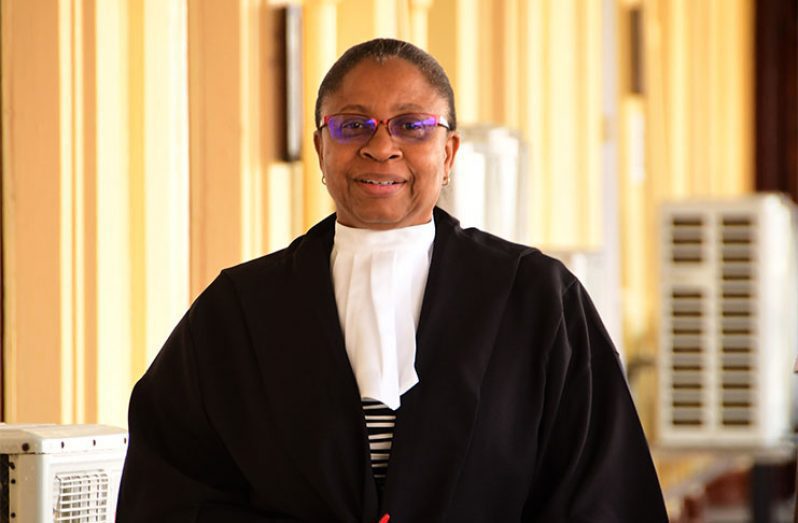FINDING that the application lacked evidence and merit, Chief Justice (ag) Roxane George, on Tuesday threw out the case filed by three Guyanese women activists against the Environmental Protection Agency (EPA) to put a stop to flaring of gas offshore by ExxonMobil.
The case, which was filed on January 24, 2022, by Sinikka Henry, Sherlina Nageer, and Andriska Thorington revolved around allegations that the EPA had acted in violation of the law when it modified Environmental Permit 20160705-EEDPF on May 15, 2021.
The applicants had also argued that the EPA’s decision to impose a $30.00 USD per tonne charge for carbon dioxide equivalents emitted, as stipulated in the modified permit, contradicted the polluter pays principle.
They were represented by attorneys Melinda Janki, Seenath Jairam, SC, and Ronald Burch-Smith.
In response, the EPA argued that the modification was necessary because the original permit prohibited only routine flaring and did not address “non-routine” flaring.
The EPA maintained that the modification aimed to establish clear conditions for regulating non-routine flaring.
Additionally, the EPA justified applying the polluter pays principle to hold ExxonMobil Guyana Limited accountable for maintaining an environmentally acceptable state, as required by the Environmental Protection Act, Cap 20:05.
The applicants, however, contended that the EPA’s decision deviated from the EP Act and would lead to additional adverse effects. They sought the quashing of the modified permit and the reinstatement of its previous version.
In her ruling, Chief Justice George meticulously examined the evidence presented in the case and found in favour of the EPA, emphasizing that the applicants had failed to adequately substantiate their claims.

She noted that the evidence provided was confusing and primarily comprised opinions, either from the applicants themselves or from their legal representatives.
The court also acknowledged that during the course of the proceedings, the applicants had abandoned several requested reliefs due to a lack of evidential basis.
Moreover, the remaining reliefs sought by the applicants were unsupported by any compelling evidence.
Addressing the polluter pays principle, the Chief Justice pointed out that the Environmental Protection Act (EP Act) recognized that there might be adverse environmental effects for which the polluter would need to bear the cost.
However, she did not specify the exact amount or timeline for such payments, leaving that determination to the EPA.
The EPA, represented by attorneys Frances Carryl, Shareefah Parks, and Niomi Alsopp, welcomed the Chief Justice’s ruling, emphasizing the agency’s commitment to carrying out its responsibilities in accordance with the law.
The EPA encouraged the public to participate actively in its decision-making processes, emphasizing the importance of meaningful and informed contributions to safeguard Guyana’s environment and natural resources sustainably.



.jpg)








